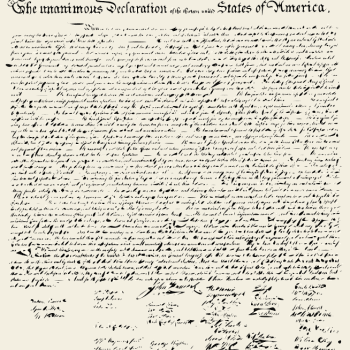Stephen Pearlstein sees a shift in the campaign strategies of both sides:
The winning strategy is no longer to be more moderate than your opponent, to offer a bigger tent. Instead, it is to be more zealous and committed to your party’s ideology.
This transformation has its roots in what has become the dominant reality of American politics: the arms race in campaign finance. Candidates and parties now raise and spend enormous sums, well beyond what would reasonably be needed to provide for a well-informed electorate and well beyond what is raised and spent in other advanced democracies.
These days, the average Senate candidate raises and spends $9 million to win election, which works out to slightly more than $4,000 for each day of a six-year term. For the average House candidate, it’s $1.4 million, or just under $2,000 per day in office (including Saturdays, Sundays and holidays). These sums are several times what they were 25 years ago.
Given this dramatic increase in campaign spending by those with the most intimate knowledge of campaigns, and with the most at stake in the outcomes, it’s probably safe to conclude that this spending must work — that it can determine the outcome of close contests. In fact, it appears to work so well that it has now been embraced by a growing legion of “independent” entities with their own fundraising and campaign spending.
And how is the money spent? Anyone with a telephone, TV set or Internet connection has surely noticed that it is mainly used to produce an ever-increasing volume of negative, distorting and ideologically tinged advertising about opposing candidates and parties.
Contrary to what many believe, the central effect of such negative advertising isn’t to move voters from supporting another candidate to backing yours, as Mitt Romney and his allies have discovered during this primary season. The main effect is not even to move undecided voters into your column. No, the real effect of negative advertising is to energize and solidify support among your ideological base while turning everyone else off to the other candidate, the campaign and the entire electoral process. Negative advertising isn’t about changing minds; it’s about altering the composition of the voter pool on Election Day by turning moderate voters into non-voters.
This is particularly true in low-turnout elections such as primaries and midterm contests. But it is even true these days in high-turnout elections. . . .
Energizing the base has another important advantage: It increases campaign contributions from both small donors and rich zealots. That money can be plowed back into yet more negative advertising along with sophisticated get-out-the-vote efforts on Election Day. This self-reinforcing cycle creates a strong incentive for politicians to abandon the center and move permanently to the ideological extreme. You do not energize the base through moderation and compromise. . . .
There is a vigorous academic debate over whether negative advertising depresses or increases voter turnout. I suspect it does both, depressing turnout among moderates and independents while stimulating it at the ideological extremes. In that process, what has changed is the composition of the turnout rather than its overall level.
via Today’s paper.














